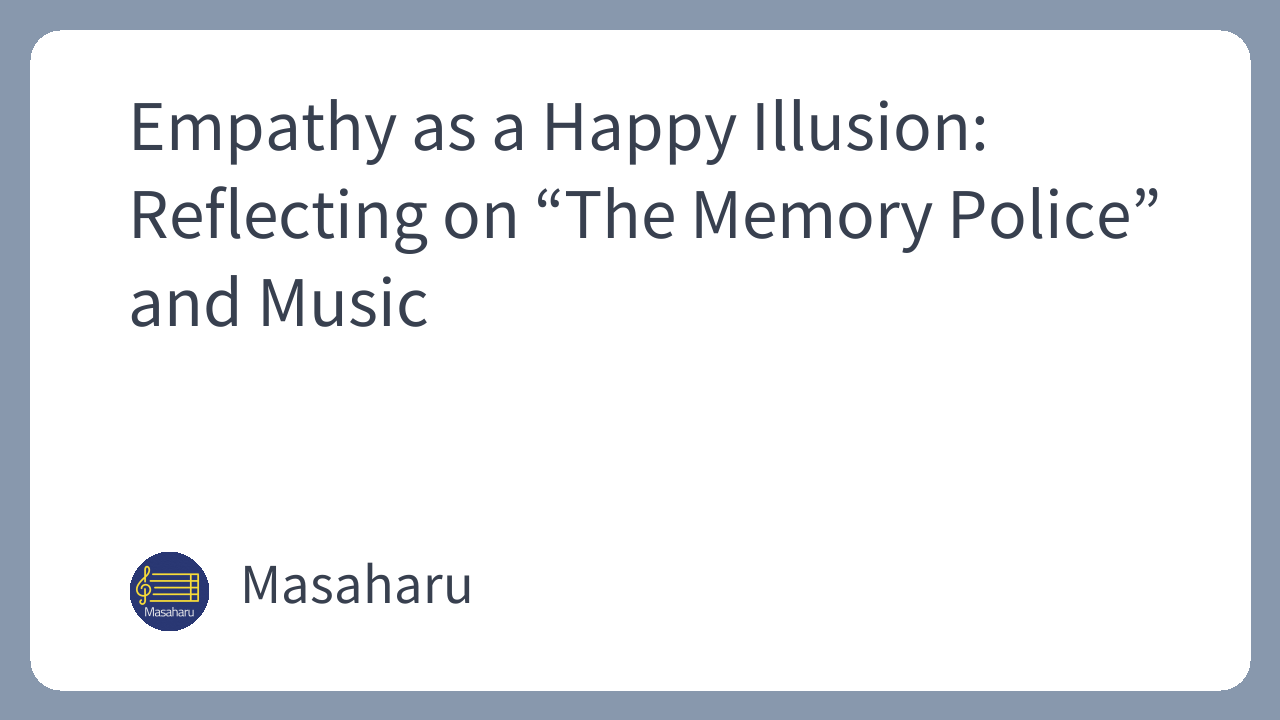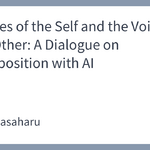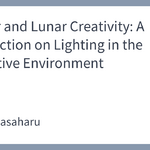I recently finished reading Yoko Ogawa’s “The Memory Police.”
The experience of reading it was somewhat unique for me. It wasn’t a case of strong emotional investment in the characters or vivid imagery of the scenes. Instead, I found myself quietly absorbed, simply following the story as it unfolded. Yet, I felt a sense of fulfillment upon closing the final page, a feeling that I had grasped the entirety of the story’s world. It was a kind of “quiet conviction.”
However, this was likely nothing more than a “happy illusion.” It’s impossible for a third-party reader to perfectly comprehend a world that the characters themselves may not fully understand. On reflection, I realize the “whole picture” I felt I had grasped was not something handed to me by the author, but rather an image that emerged as my own memories, experiences, and emotions resonated with and complemented the fragments of the story. It was an image that had secretly crystallized within my own mind. The satisfaction I felt at that moment was born from my own internal engagement with the text.
This reading experience resonates with my own ideas about the “mechanism of empathy in music” (see related articles). Empathy in music is often misunderstood as the listener directly re-experiencing the composer’s emotions and intentions. In reality, we can never know the composer’s complete intent, nor is there any way to verify it. Nevertheless, when we listen to music, we construct our own version of the whole picture and find empathy within it.
Music is a time-based art, making it impossible to grasp its entirety in a single moment. The voids within a piece, such as rests and lingering reverberations, actively encourage the listener’s imagination. If music were a relentless stream of sound with no gaps, it would become a torrent of information, approaching the state of meaningless noise. In the moments of silence, we ask ourselves, “What comes next?” or “What meaning can I find here?” It is then that we use our own sensibilities, even drawing on ambient sounds and past memories, to crystallize our own unique image of the music.
This process is akin to reading the “unwritten words” between the lines of a novel. The spaces left intentionally or accidentally by the composer awaken the listener’s sensibilities, allowing them to reconstruct the “whole picture” on their own terms. The resulting image is not, strictly speaking, the composer’s original blueprint. Yet, when we accept it as “my truth,” we are truly experiencing empathy. This may be called an illusion, but perhaps this “happy illusion” is one of the profound joys of experiencing art.
This is how I understand the “quiet conviction” I felt after finishing “The Memory Police.” I didn’t fully comprehend the author’s intent; rather, by engaging with the work, I assigned my own meaning, and as a result, “my own whole picture” crystallized. That is why I felt such satisfaction.
The same principle applies to composition. The process of selecting, arranging, and shaping materials into a musical flow involves the composer’s own sensibilities and will. The work that emerges then becomes another “whole picture” for the listener, and a new form of empathy is born in the relationship between them.
Ultimately, reading, listening to music, and creating are all activities driven by our fundamental desire to “give meaning.” And though this endeavor may be a (happy) illusion, it connects people and allows artworks to live on across time. This, I believe, is the mysterious and precious power of art.
Related Articles



